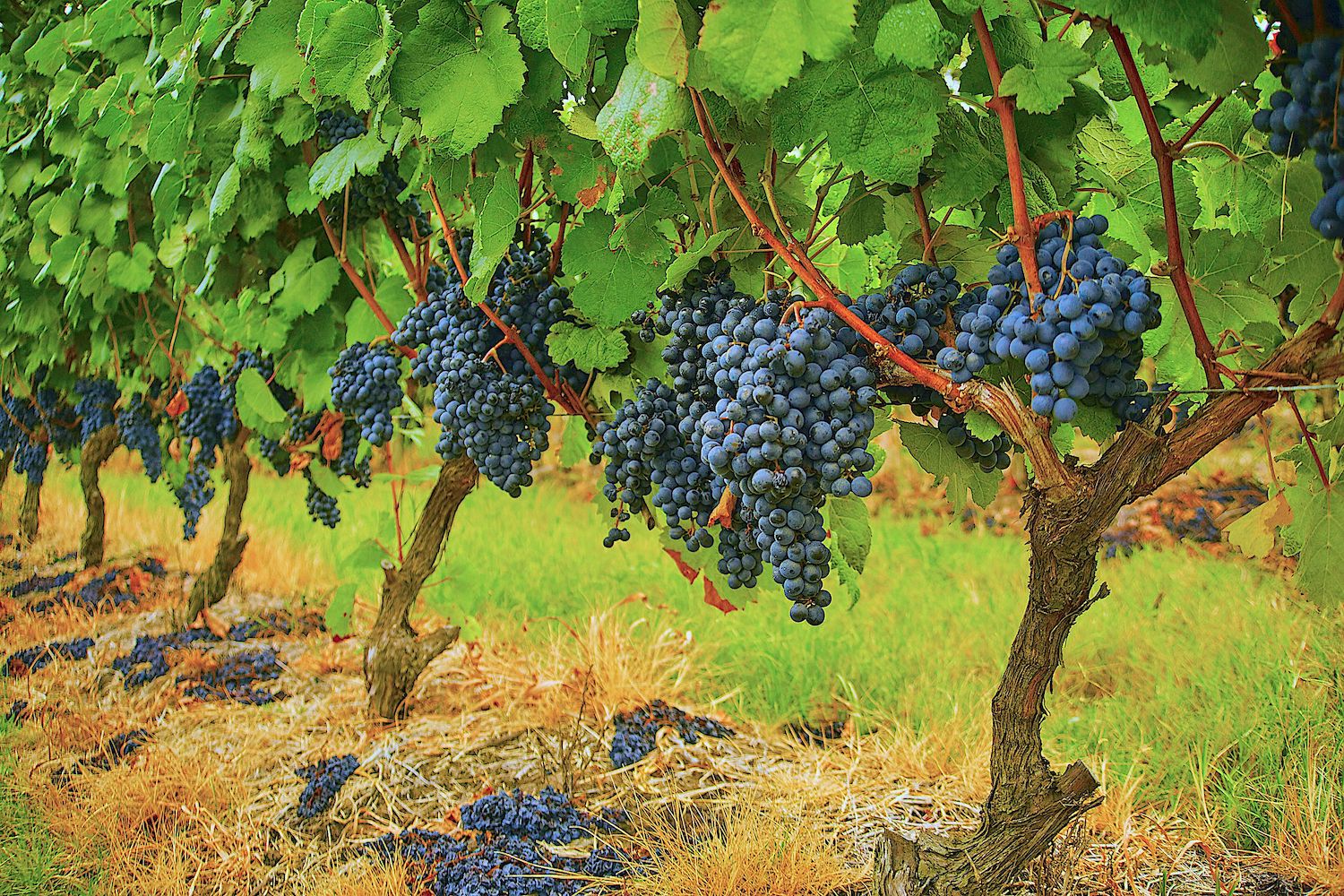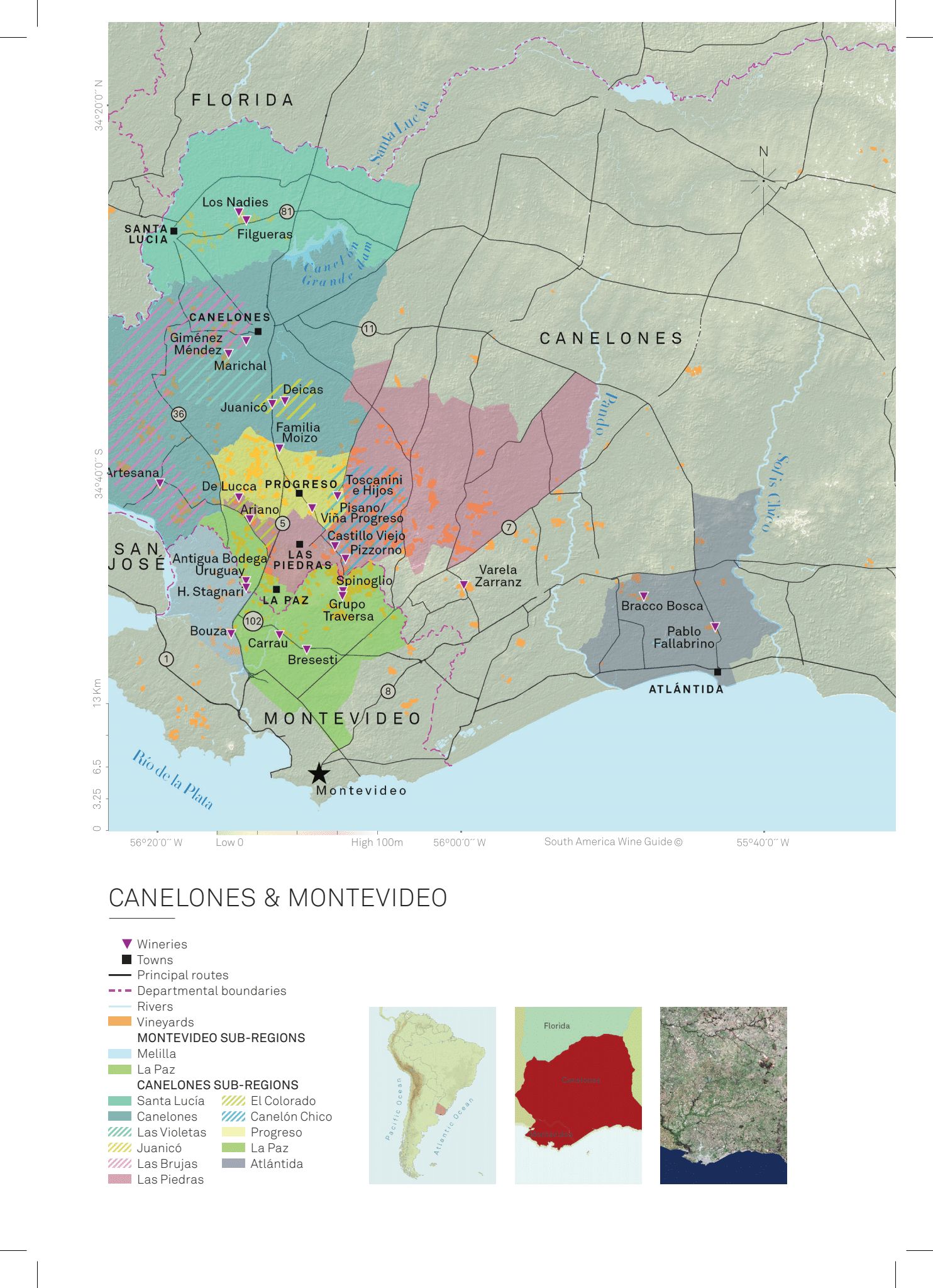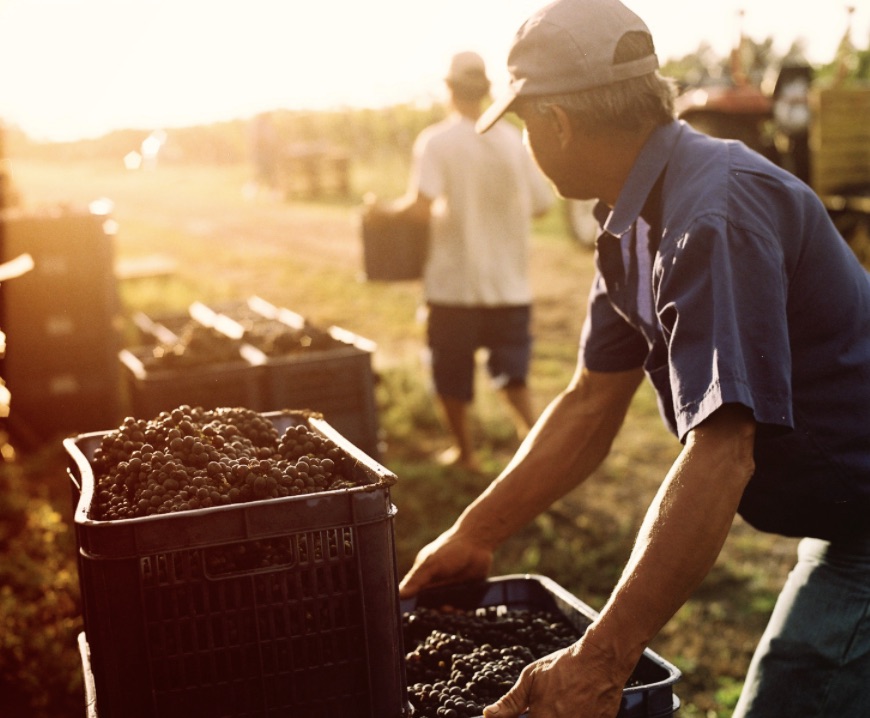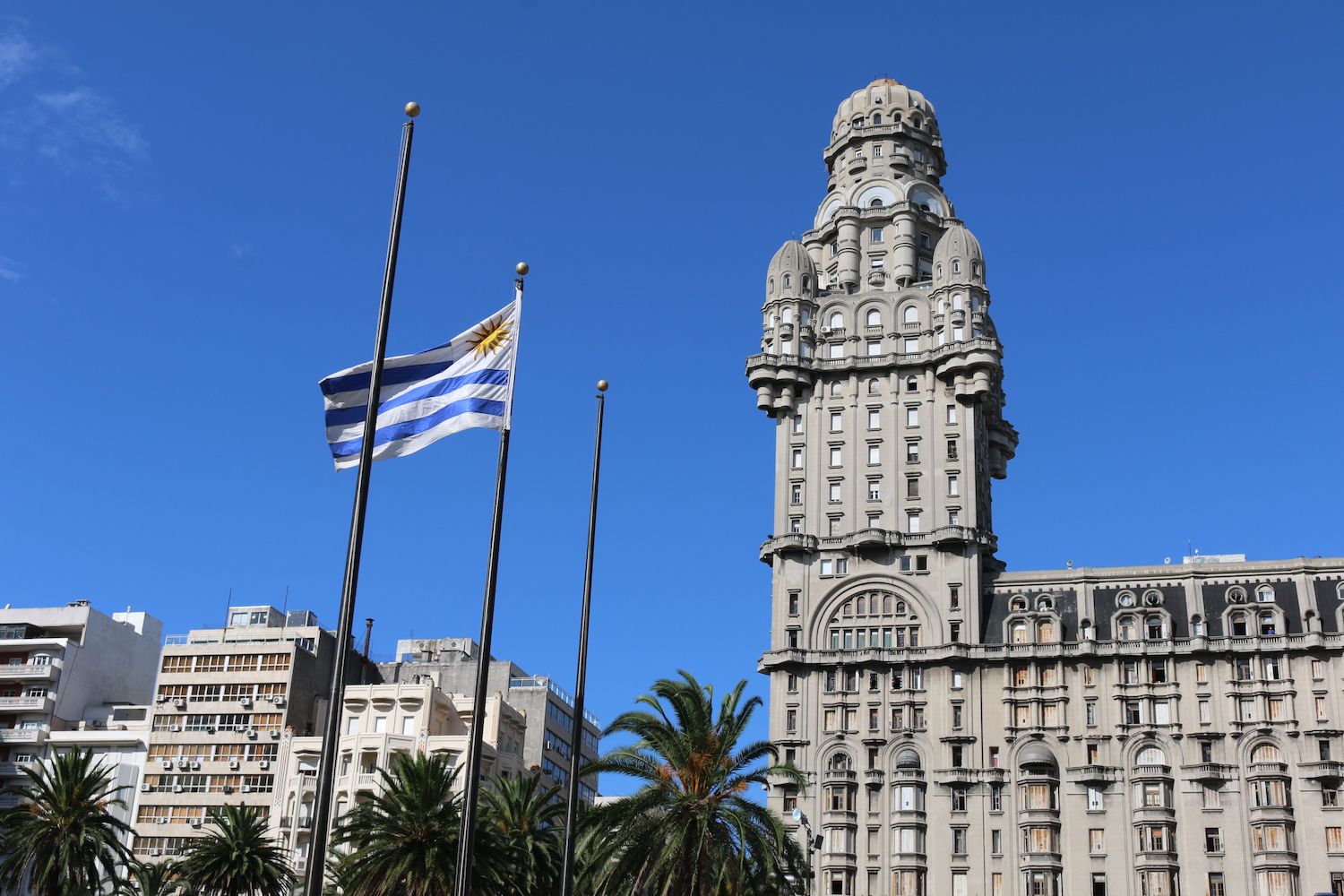Canelones and Montevideo are very much the heartland of Uruguayan wine, with a wide range of vines and wines of all different styles and quality levels. However, it is also home to some of Uruguay’s oldest vines, which can produce some superlative wines that are well worth the extra cost and effort involved in producing them.
Guide to Canelones & Montevideo Wine Region
Wineries
Quick Guide to Canelones & Montevideo
Best Wines to try
Map of Canelones & Montevideo
Guide to Canelones & Montevideo wine regions
Five out of every ten Uruguayans live in Montevideo and Canelones, which are also home to eight out of every ten of the vineyards in Uruguay. Canelones and Montevideo are undoubtedly the most important wine regions in Uruguay today and have been ever since the emergence of Uruguay’s wine industry last century.
It’s a no-brainer as to why the vineyards and wineries were originally set up as close as possible to Uruguay’s capital city, Montevideo. With its main market right on its doorstep, the industry was able to thrive, while keeping transport costs to a minimum.
Canelones effectively envelops the capital of Montevideo, like a large Pac-Man chomping on the capital, which is about a tenth of its size. Rich in meadows, woods and waterways, Canelones is a rural and agricultural region. Although Canelones produces a wide range of fruits, cereals and vegetables, viticulture is its main crop and its wine regions extend right across the province.
Between them, Canelones and Montevideo have over 1,000 different vineyards, which are mainly owned by family wineries or growers. Given this figure, they also, unsurprisingly, have the greatest diversity of grape varieties in Uruguay. The impressive range of grapes, from Nebbiolo to Chasselas, reflects the diverse heritage of producers who have settled in the region.
Apart from the convenience of being right beside a captive market, Canelones and Montevideo also developed as Uruguay’s premier wine regions because of their fertile soils and naturally productive land. Rich clay soils result in vigorous vines and therefore lucrative grape production, which was the name of the game when the industry blossomed last century. Volume was the focus during most of the 20th century, catering for a thirsty, if undemanding, domestic market.
Now, however, the challenge in Canelones and Montevideo is to reduce the productivity of the vines. Growers and wine producers who want to focus on producing high-quality, concentrated and fully ripe grapes might drop their yields by more than half in order to achieve the right balance between quality and quantity. Most growers achieve this through a rather ruthless green harvest, a common practice during veraison, most especially with Uruguay’s star variety, the late-ripening Tannat.
Wineries in Canelones & Montevideo
ANTIGUA BODEGA URUGUAY
There’s so much to love about Antigua Bodega Uruguay: a family winery now with the sixth generation picking up the mantle and a strong female-led winemaking team. And it’s a pioneer of juicy, unoaked Tannat.
ARTESANA
The boutique estate winery Artesana in Las Brujas is Uruguay’s first and only producer of Zinfandel, perhaps unsurprisingly as one of Artesana’s founders is California-born Blake Heinemann.
BODEGA SPINOGLIO
Located in a historic winery in Cuchilla Pereyra dating back to 1898, a visit to Bodega Spinoglio provides an insight into Uruguayan wine past and present. The Spinoglio family bought the historic property in 1961 and it is now run by fourth-generation vigneron, Diego Spinoglio.
BOUZA
One of the leading wineries in Uruguay with an exciting range of wines coming from vineyards in Montevideo, Canelones and Maldonado, Bodega Bouza is the energetic partnership between Juan and Eliza Bouza and Uruguayan winemaker par excellence, Eduardo Boido.
BRACCO BOSCA
Bracco Bosca is the dynamic family winery and vineyard of fifth-generation grower Fabiana Bracco in Atlántida. With their 11-hectare vineyard located just eight kilometres from the sea, the vibrant collection of white, red and rosé wines reflect this maritime terroir.
FAMILIA DEICAS
One of the most prestigious and trailblazing producers in Uruguay today, Familia Deicas combines the long history inherited from their 18th century estate in Juanicó with a ground-breaking approach to modern Uruguayan wine.
H STAGNARI
H Stagnari is the winery of Héctor Stagnari, a third-generation vigneron in Canelones, who built his cellar and winery with his wife Virginia in 2000.
MARICHAL
Following over 100 years of tradition as grape-growers, the fourth generation of the Marichal family, brothers Juan Andrés and Alejandro, expanded the family business to focus on fine wine production in 2002.
MONTES TOSCANINI
The Toscanini family has a history of winemaking in Canelones that stretches back well over 100 years but it is only in the most recent reincarnation, since 1979, that the third and fourth generation of the family has restarted wine production in this winery in Las Piedras.
PISANO FAMILY VINEYARDS
This superb family winery is run by the fourth generation of the Pisano family who arrived from Liguria, Italy, over 150 years ago. Today three brothers — Gustavo, the winemaker; Eduardo, the agronomist; and Daniel, the export manager — run the show.
PIZZORNO
One of the most innovative and forward-thinking wineries in Canelones, Pizzorno is not only dynamic in its wine portfolio but also in its tourism offerings — with an excellent winery restaurant, a small B&B and heli tours of the vineyard!
VIÑA PROGRESO
Viña Progreso is the exciting, boutique label of Gabriel Pisano — one of the most promising of Uruguay’s new generation of winemakers. Born into the Pisano wine dynasty, Gabriel makes wines in the family cellar (see Pisano) in Progreso but also rents a winery space to produce his own innovative and experimental range.

Quick guide to Canelones & Montevideo
Hectares planted
4,672 hectares (Canelones 3,958 ha; Montevideo 714 ha)
Sub-regions in Canelones & Montevideo
Atlántida, Las Piedras, La Paz, Progreso, Melilla, El Colorado, Las Brujas, Juanicó, Canelón Chico, Las Violetas, Santa Lucía
Soil type
Rich, fertile soils, usually with a large proportion of clay, calcareous and silt with some ancient pink granite. Sandier in north-eastern Canelones
Grape varieties & wines
The combination of cooling coastal breezes, clay-limestone soils and a mild climate gives the wines of Canelones and Montevideo refreshing but firm character — typically with modest alcohol, fresh acidity and structured tannins. Tannat excels here, but so do a host of other red and white varieties. Although the climate and soils of Canelones and Montevideo are relatively consistent, there is great diversity in the families and producers based here, which makes it Uruguay’s most varied wine terroir.
Terroir Selection: Best wines to try from Canelones & Montevideo
BOUZA, Merlot Parcela Única B9
Las Violeta. $$. Drinking window <20 years
My favourite Merlot in Uruguay, and one that ages fantastically well. Winemaker Eduardo Boido is a great fan of Merlot and he shows how beautiful it can be. This one is from a special block of calcium-rich soils in Las Violetas. Resplendent with aromas of berries, cacao and sage, with a smooth and lingering finish.
VIÑA PROGRESO, Elis’a Dreams
Progreso. $$. Drinking window <15 years
Gabriel Pisano began experimenting with open-barrel and native ferments after doing a vintage in Priorat and Elisa’s Dreams is the stunning result of this experience. A wild, nuanced and aromatic wine with fine-grained tannins, lively acidity and a smooth, balanced finish — this has been one of my favourite Uruguayan Tannats ever since his first vintage a decade ago.
FAMILIA DEICAS, Extreme Vineyard Suelo Invertido Tannat
Progreso. $$. Drinking window <15 years
If anyone wanted to turn terroir on its head, this might be just the way to do it. In order to take advantage of the limestone subsoil but mitigate the effects of the heavy clay topsoil, the Deicas team literally turned their vineyard upside down — flipping over a soil block and planting it with Tannat in 2004. It seems to have worked: this savoury wine is more about its tension, texture and freshness on the finish. For wine geeks.
ANTIGUA BODEGA URUGUAY, Mburucuyá
Santos Lugares, La Paz. $$. Drinking window <10 years
One of the first really premium unoaked Tannat blends of the ‘modern school’, this Tannat-Merlot-Cabernet Franc-Syrah-Sangiovese blend is packed with bramble fruit, raspberries, spices and floral aromas. Vibrant and fresh yet able to stand up to any complex meat dish.
PISANO, Pájaros Pintados Sauvignon Blanc
Progreso. $$. Drinking window <5 years
I’m a big fan of Pisano’s reds, but this Sauvignon Blanc is a revelation for me and one of my favourite Sauvignon Blancs from Uruguay. Textural and mineral with a focus on transporting you to the calcareous earth and coastal breezes of Progreso, rather than on the variety. It’s delicate on the nose but intense on the palate. A geeky wine, and one that appeals to me by the bucketload! Only 617 bottles.
ARTESANA, Tannat/Zinfandel/Merlot
Las Brujas. $$. Drinking window <10 years
The juicy fruit and supple nature of Zinfandel and Merlot balance beautifully with Tannat in this intriguing blend from the boutique Artesana winery. Sweet spice, bramble and dark chocolate, this is a comforting and bewitching wine from Las Brujas.
PIZZORNO, Maceración Carbónica Tannat
Canelón Chico. $. Drinking window <5 years
This is my go-to by-the-glass Tannat when in Uruguay. Made with carbonic maceration, it flips the concept of Tannat being a heavy wine on its head. Instead it is juicy, fruity and filled with vibrant red fruit aromas with just a peppery sprinkle of tannin and minerality on the finish. A pioneer of the ‘modern’ school of Tannat. Drink chilled!
BRACCO BOSCA, Gran Ombú Cabernet Franc
Atlántida. $$. Drinking window <10 years
There’s great potential for Cabernet Franc in Uruguay, and this juicy wine from the cooler coastal side of Canelones shows why: a bright, refreshing wine with aromas of crunchy red fruit, tobacco leaves and fine herbs, and a lively finish with peppery tannins. A star within the vibrant portfolio of this boutique family winery.
Want to know more about Canelones, Montevideo, and the wine regions of Uruguay?
ORDER YOUR COPY of The South America Wine Guide now!
E-book AVAILABLE ONLINE too.
Map of Canelones & Montevideo wine regions
You can download all the wine region maps for South America for free on this link. Please feel free to share and use the wine region maps while crediting @SouthAmericaWineGuide.



